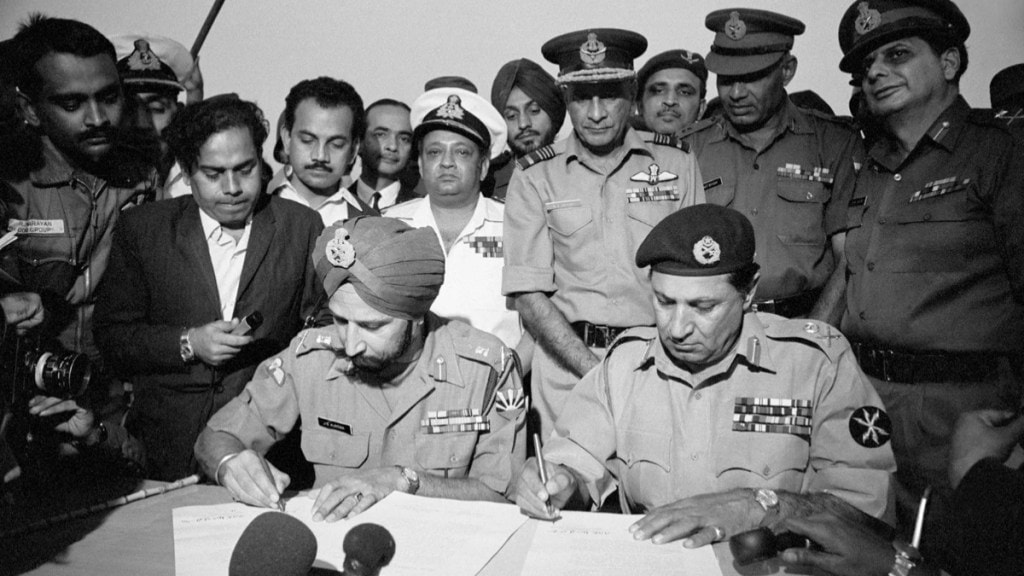Just a day after recommending US President Donald Trump for the 2026 Nobel Peace Prize for his “decisive diplomatic role” in India-Pakistan standoff, Pakistan on Sunday made a U-turn, strongly condemning the United States for launching airstrikes on Iranian nuclear sites. While Pak’s complete flip of stance has left the internet in splits, there’s another piece of history that has grabbed our attention, and it is quite interesting and ironical.
When US was worried that Pakistan might collapse under India’s military pressure
A surprising piece of history has emerged, one where the US actually urged Iran to help support Pakistan during the 1971 India-Pakistan war.
Declassified documents show that during the war in December 1971, the US was worried that Pakistan might collapse under India’s military pressure. Henry Kissinger, the then national security advisor to US President Richard Nixon, held a high-level meeting on Dec 9, 1971, where they discussed how Pakistan’s fuel reserves were running dangerously low, especially after Indian forces attacked the Karachi port, which held most of Pakistan’s fuel. The US feared that Pakistan’s military operations in the western part of the country would come to a complete halt if fresh fuel wasn’t supplied immediately.
To prevent that, Kissinger asked whether Iran could quickly send fuel supplies to Pakistan from Tehran. The US also discussed the idea of Iran supplying fighter jets to Pakistan to strengthen its defense against India’s advancing forces, and this discussion happened n the same meeting. Another proposal included asking China to move its troops near the Indian border to create pressure and distract India.
Kissinger had also asked Admiral Thomas H. Moorer, the then Chairman of the Joint Chiefs of Staff, for an update on the military situation during the India-Pak war.
Admiral Moorer had informed him that in East Pakistan, without a ceasefire, the Pakistani Army would soon collapse. He also said that their supply lines had been cut, they had no air support left, and any major fighting would likely end within 10 to 14 days. The only question was whether Pakistani troops would fight until the very end or start surrendering, although at that time, surrender didn’t seem like a possibility.
He also gave a view of the situation in West Pakistan, saying that Pakistani forces were trying to capture enough territory in Kashmir to use as leverage in any future negotiations. Their aim was to block India’s main routes of communication. However, south of Kashmir, Indian forces outnumbered Pakistani troops two to one. While there was no clear sign of India planning an advance toward Lahore, it remained a possibility. Moorer said Pakistan’s best hope was to secure as much of Kashmir as possible before a ceasefire was reached.
He estimated that Pakistan could continue military operations in the west for about three more weeks. But if the war dragged on without a ceasefire, India had the upper hand and would outlast Pakistan. According to him, Indian Prime Minister Indira Gandhi was determined to destroy Pakistan’s military strength.
Kissinger then asked if, even in a longer war where Pakistan managed to take parts of Kashmir, it would be able to hold on to them or whether the Pakistan Army would eventually be wiped out.
Moorer agreed, saying that once East Pakistan was lost, India would move its forces—possibly four of the six divisions—from East to West Pakistan. This troop movement would take one to three weeks, depending on the amount of air support used. If the war continued, he said, Pakistan’s defeat was unavoidable.
This moment from history reminds us of a very different time, when the US saw Iran as a close ally and was willing to involve it in a major South Asian conflict to protect its strategic partner, Pakistan. The episode, in today’s time, stands in stark contrast to the current reality.

